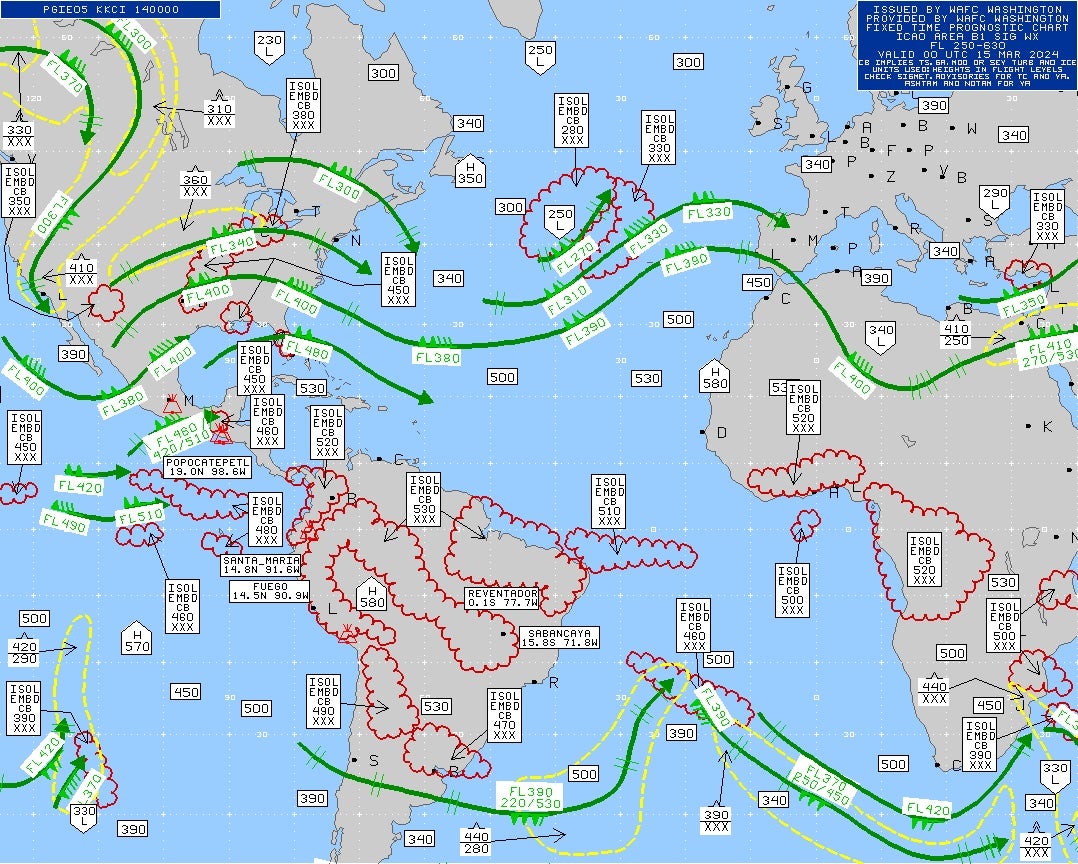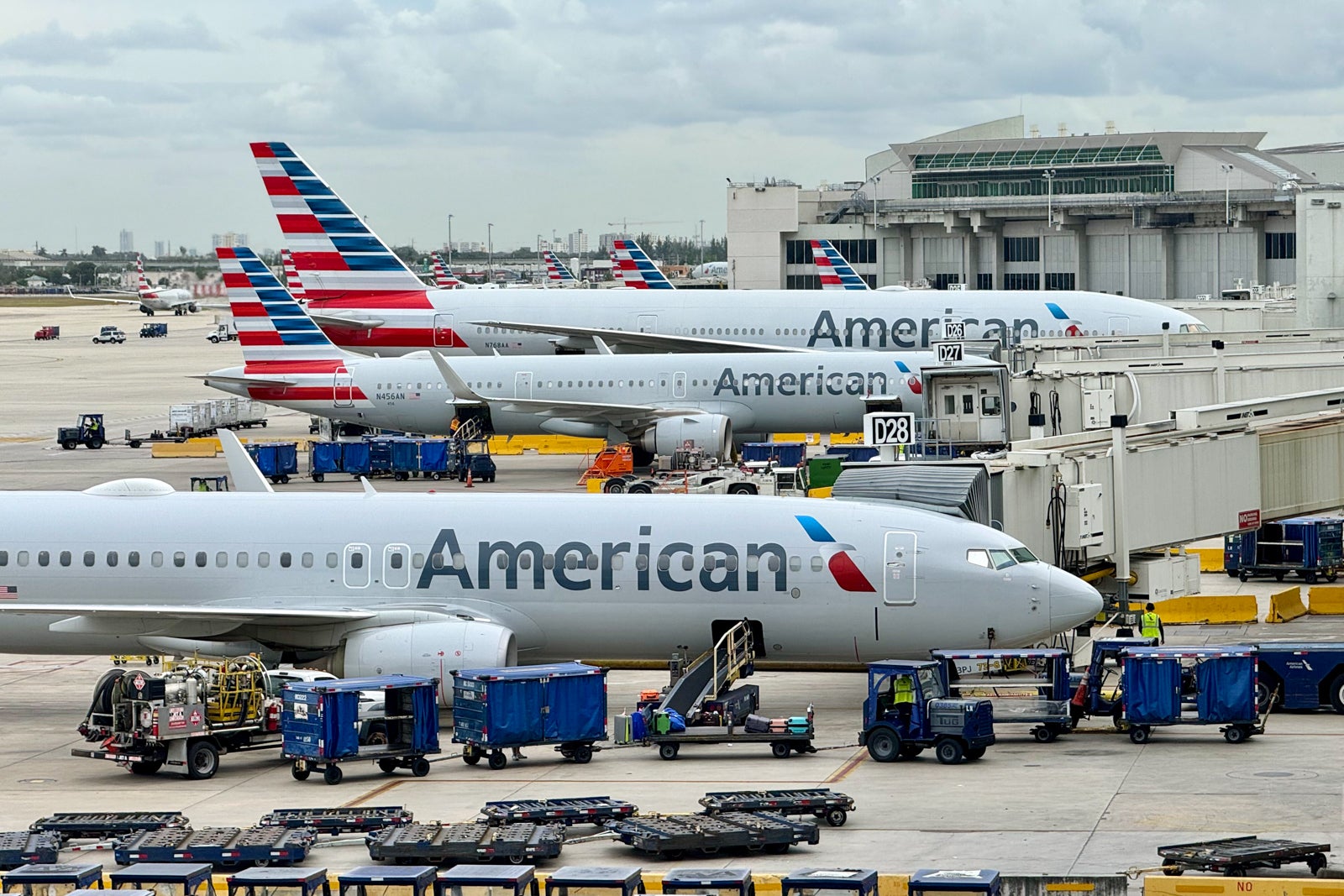If you’ve ever taken a westbound flight, you may have noticed the flight time was shorter coming home than on the way there. For example, a direct flight from New York to Los Angeles takes about six hours and four minutes. However, you shave about an hour off the flight time on the return flight, which clocks in at just five hours and eight minutes.
If you look at flight times for a transatlantic flight, the time savings can increase even more: A flight from San Francisco to Hong Kong, for example, clocks in at about 14 hours and 45 minutes, but coming back takes around 12 hours and 35 minutes.
Related: Why the quickest flight route might not always be the obvious one
This discrepancy in flight times has nothing to do with the earth’s rotation, time zones or any other theories you may have heard. Strong air currents that flow from west to east at high altitudes, called jet streams, are the actual cause.
TPG spoke with aviation and meteorology experts to learn about jet streams, how they affect flight times and how pilots utilize them when planning their flight paths.
What are jet streams?
According to the National Oceanic and Atmospheric Administration, jet streams are “relatively narrow bands of strong wind in the upper levels of the atmosphere, typically occurring around 30,000 feet (9,100 meters) in elevation.”
“Jet streams exist because of temperature contrasts,” Marc Weinberg, chief meteorologist at WDRB in Louisville, Kentucky, told TPG. Jet streams form at the boundaries between warm air and cold air.
They flow from west to east but can shift from north to south based on air temperature. “Jet streams will always form over the largest temperature contrast,” Weinberg explained. “Winter pushes the jet streams south as the cold air moves south, and as temperatures warm up in the summer, they push farther north again,” he added.
In winter, you will typically see stronger jet streams because the more pronounced difference between the hot and cold air boundaries causes the intensity of the jet stream to increase. Other climate patterns, like El Nino and La Nina, add to this intensity.

Daily Newsletter
Reward your inbox with the TPG Daily newsletter
Join over 700,000 readers for breaking news, in-depth guides and exclusive deals from TPG’s experts
There are several jet streams — or jets — across the globe: two polar jet streams near the North and South poles and two subtropical jet streams closer to the equator, according to the NOAA.
Why do jet streams affect flight times?
Because the air inside a jet stream moves faster than the air around it, planes traveling through the stream get a speed boost.
“On average, the jets usually move at about 110 or 120 miles per hour,” Amanda Martin, acting warning coordination meteorologist for the Aviation Weather Center, told TPG. A plane flying within that jet stream will move faster, as demonstrated in the above examples between New York and LA or San Fransisco and Hong Kong.
This is true when the jets are moving at their typical speed, but it becomes even more pronounced when the jets are stronger. Take, for example, a notable Virgin Atlantic flight in February 2024 that was flying from Washington, D.C.’s Dulles International Airport (IAD) bound for London’s Heathrow Airport (LHR). The average cruising speed for a commercial flight is about 575 to 600 miles per hour, but this flight reached 802 miles per hour, according to data from FlightAware.
The jet that this flight utilized peaked at around 265 miles per hour (more than 100 miles per hour more than average), providing a major speed boost. Thanks to the increased speed of the jet, the flight landed 45 minutes earlier than originally scheduled.
“Jet streams in that range are uncommon,” Weinberg said. “A jet moving at 100 miles per hour will save you some time, but when the jet is moving at 200 miles per hour or more, you can more than double the amount of time you gain,” he continued.
The Baltimore-Washington, D.C., branch of the National Weather Service reported it was the second-strongest upper-level wind recorded in local history. “For those flying eastbound in this jet, there will be quite a tail wind,” it stated in a social media post.
How can pilots utilize jet streams?
It’s not just by chance that pilots use jet streams to get to their destination ahead of schedule.
“Our dispatchers and flight planners will try to route us in such a way that best takes advantage of tailwinds provided by jet streams,” Patrick Smith, airline pilot and bestselling author of “Cockpit Confidential,” told TPG.
In fact, one of the tools the Aviation Weather Center has available on its website is a flight planning tool that displays the speed and elevation of the jets. The jets are represented by the green arrows in the above chart and labeled with the elevation and wind speed (only when the wind speed is above 80 knots, or 92 miles, per hour).
Related: How pilots spend their downtime
Flight planners can use this information to plan their routes when the jet streams will benefit flight times, but anybody can access these charts. From the Aviation Weather Center homepage, click on “Decision Support Imagery” under the “Tools” menu. The “SigWx – high level” product is the one that displays jet streams.
Jet streams are only one factor that airlines must consider when planning their flights. The Aviation Weather Service also has forecasting tools that display turbulence, thunderstorms and other weather patterns. “We want to provide forecasts and promote safe and efficient flights across the national airspace system,” Martin said. “We have several connective products that are used for flight planning,” she added.
The downside to jet streams
It should come as no surprise that if jet streams are advantageous in one direction, they can have the opposite effect going in the other.
TPG managing editor Clint Henderson experienced this firsthand on a flight from New York City to San Francisco. His arrival in San Francisco was delayed by 46 minutes due to a strong headwind courtesy of a jet stream.
Pilots try to avoid the jets when flying from east to west, but it isn’t always possible to avoid them completely. “When flying from east to west, the flight planner can route us in a way that avoids the strongest winds,” Smith said.
Jet streams can also contribute to turbulence in certain weather conditions, but turbulence has more to do with the overall weather than just the speed of the jets. “The boundaries of a jet stream are sometimes turbulent, but not always,” Smith said.
“If it’s clear skies in a strong jet, it can sometimes be a little bumpy, but nothing out of the norm,” Weinberg said. “If you experience extreme turbulence, it’s more likely related to a storm system versus just the jet stream,” he added.
Bottom line
Most of us are happy to get to our destination early, but now you know exactly why planes fly faster when heading east versus west. Next time you arrive early, you can thank your pilot and the jet streams.
Related reading:


